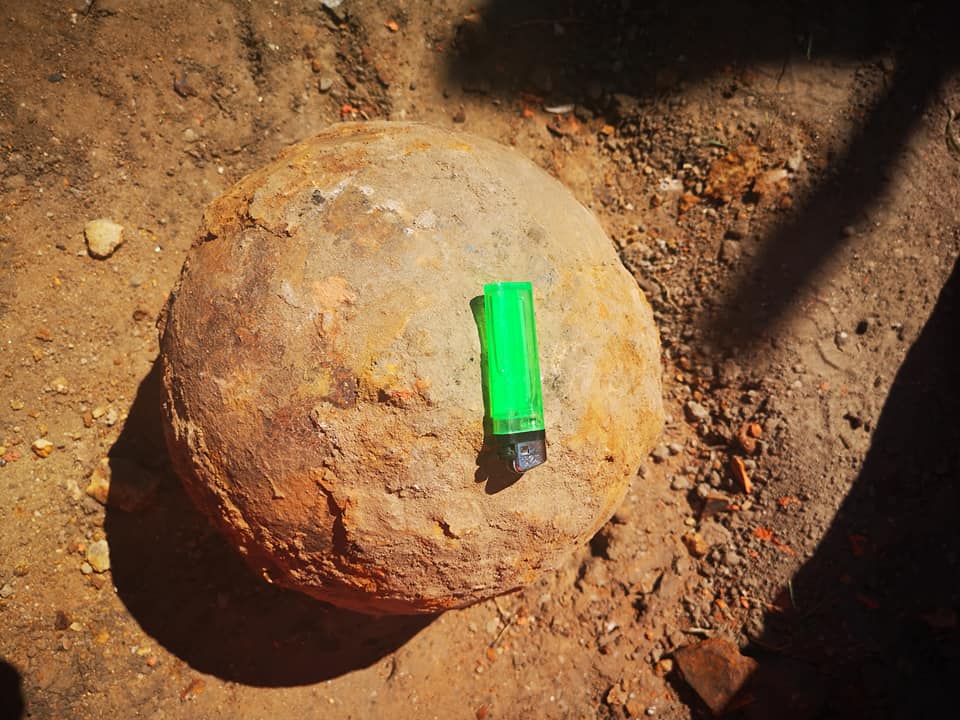40 kilogram cannonball
Categories: Finds and rescue research abroad , Nálezy nejenom s detektorem kovů ve východní Evropě
In Wroclaw, Poland, a tram line to Popowice is currently under construction. Workers found an eighteenth- or nineteenth-century cannonball on the site. Similar projectiles were used on naval ships.
A huge cannonball was discovered by workers in Dmowskiego Street. There used to be a barracks nearby where artillery exercises took place. Similar historical objects have been found in the area in the past.
"Usually, however, they were much smaller cannonballs. The newly found one is 28 centimetres in diameter, weighs forty kilos and is in very good condition. Similar ones were used in cannons on ships," Wrocławskie Inwestycje, the company supervising the construction, said on social media.
Experts have also already determined what period the cannonball belongs to. It is from the eighteenth or nineteenth century. Archaeologists believe it may date back to the time when Europe was hit by the Napoleonic Wars.
"Two archaeologists we work with even claim that the cannonball dates from 1807. The city of Wroclaw was besieged by an army led by Napoleon's brother at the time, and the bombardment was meant to intimidate the city," the company further wrote on social media.
Napoleon's army had the walls torn down. This supposedly solved the overcrowding problem. Napoleon also confiscated church property. Archaeologists took the cannonball they found and placed it in a museum...
A cannonball from the Napoleonic Wars was also discovered two years ago by workers in Luční Street in Vyškov. "During their work they came across an object resembling old ammunition. Most such finds are usually of an elongated conical shape, but in this case it was a ball ten to twelve centimetres in diameter. Vyškov police officers secured the site of the find and the pyrotechnician called in stated that it was a cannonball dating back to the Napoleonic Wars. The specialist took the find for professional disposal," police spokeswoman Alice Musilová said.
An older cannonball was also discovered two years ago by two young men exploring the banks of the Třebůvka river. They handed over the find to local officers. The steel cannonball weighed four kilograms.
"In spite of the deposits, it is a valuable collection item, which we will store in the future in the Moravskotřebov museum. According to Jan Teřev from the East Bohemian Museum in Pardubice, the age of the cannonball is estimated at the end of the 14th century and at the latest the end of the 17th century. It can be assumed that the location of the find may be related to the medieval castle that once stood on the nearby Hradisko hill," said Petr Kočí, the museum's head.



Source: https://tvn24.pl/, www.policie.cz, www.moravskatrebova.cz
The article is included in categories: